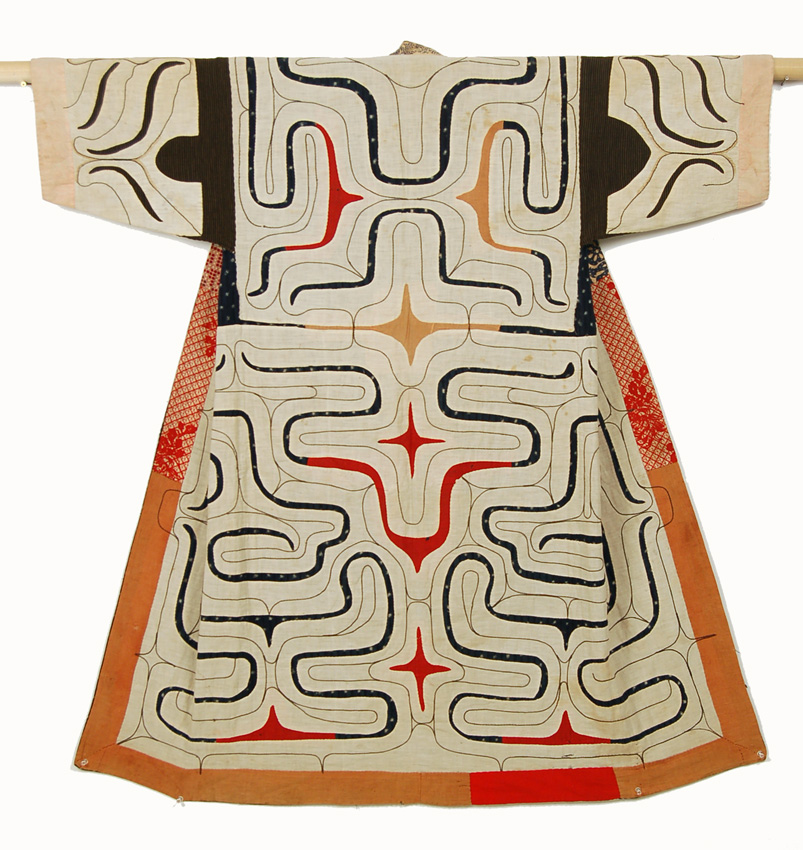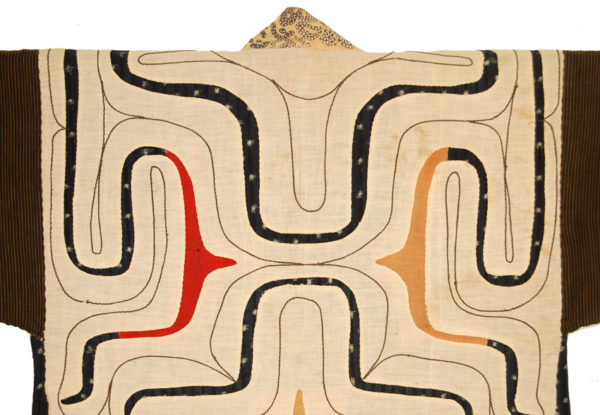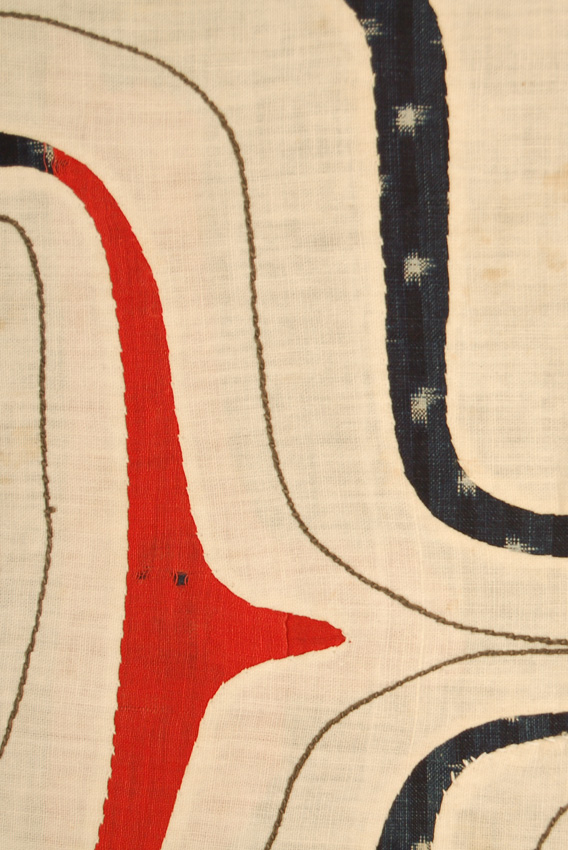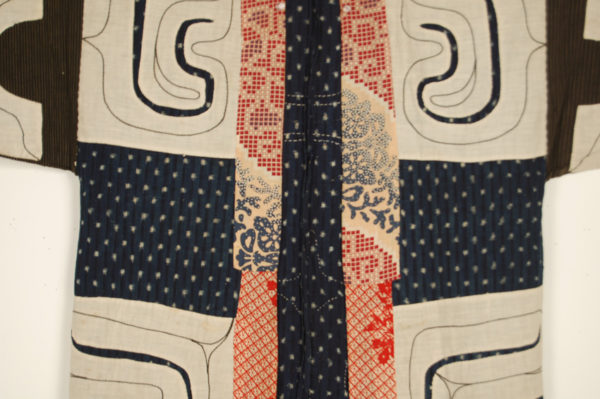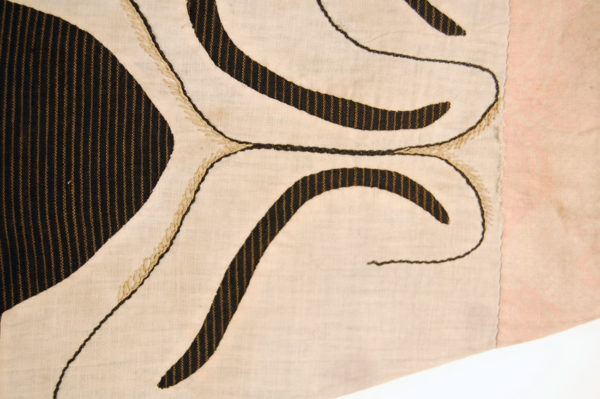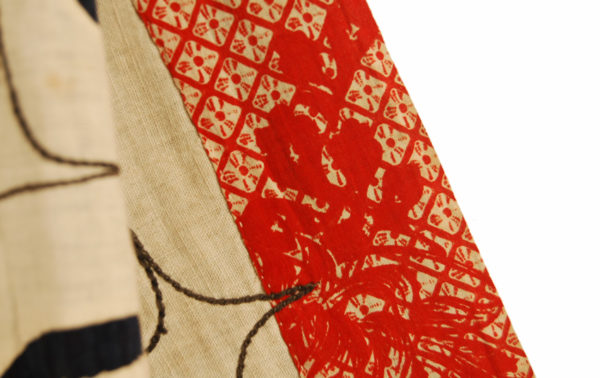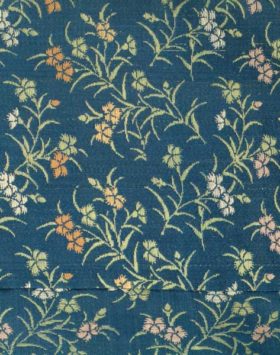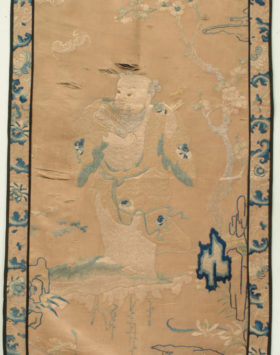Ainu Robe (chikarkarpe)
The Ainu originally inhabited all islands of present day Japan as well as southern Sakhalin which is part of Russia. Hunters gatherers who lived in autonomous villages they were gradually disenfranchised by the Japanese. Today fewer than 25,000 of them remain, mostly living on the northern island of Hokkaido.Their robes, of ceremonial nature are a hybrid of Japanese form and Inuit decorative elements. They function as protective shield not only from nature and weather but also to prevent evil spirits from entering the body.Originally isolated from the world Ainu wove their cloth from fiber derived of tree bark. Cotton , traded from the Japanese was greatly cherished and used as decorative accents. In the second half of the 19th century as cotton became more available it was more widely used. The two methods of embelishing the Ainu robes are applique and embroidery, usually combined harmoniously; the severe applique outlines softened by the delicate undulating embroidery. The iconography combines two elements- ovoid motifs and curves used to create a netlike pattern to trap the evil spirits. The design is always symmetrical but as it is done freehand it is never perfectly so. It is also continuous front to back.The body of this Chikarkarpe is made of delicate indigo kasuri, or ikat and the sleeves are of striped cotton. Red and beige central accents were then added. Next an overall white cotton applique was laid on top and everything finished with chain stitched embroidery. The borders incorporate a melange of printed cottons. Coats with white applique designs were worn at funerals and other ritual occasions.
Circa: late 19th- early 20th century
Origin: Hokkaido, Japan
Material: cotton
Condition: very good
Dimensions: 51" h x 47" w
Inventory number: WR3742
$12,500
SOLD
Call: (646) 370-6801
E-mail us: yosi@sarajo.com
